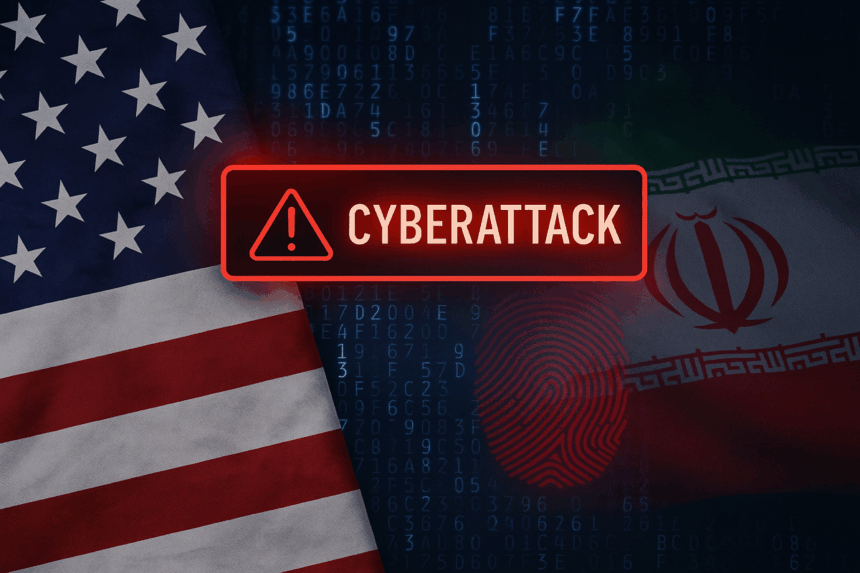The U.S. Department of Homeland Security (DHS) warns of potential “low-level” cyberattacks by Iran following recent military strikes on its nuclear sites. While no immediate threat targets the U.S., officials caution about possible cyberattacks, violent acts, and antisemitic hate crimes, as Iran could respond through cyberspace. This alert raises concerns over the growing cyber warfare landscape and its risks to critical infrastructure and national security.
What’s Happening & Why This Matters
DHS Issues National Terrorism Bulletin Amid Rising Tensions
The DHS releases a national terrorism bulletin, emphasizing vigilance against threats that may arise from Iran’s response. Secretary Kristi Noem states, “There is no current identified threat, but the possibility of cyberattacks and violence remains.” The bulletin advises federal agencies, companies, and the public to stay alert and prepare for potential attacks.
The U.S. Department of National Intelligence (DNI) rates Iranian cyber operations as a threat to U.S. networks and data. Iran regularly targets poorly secured networks and internet-connected devices in the U.S. for disruptive attacks. The Islamic Revolutionary Guard Corps (IRGC), labeled a foreign terrorist group by the U.S., plays a key role in sponsoring these cyber campaigns.
Iranian Hackers Target Critical Infrastructure
Iranian-backed hackers target vital sectors, including transportation, healthcare, and public health, according to the Cybersecurity and Infrastructure Security Agency (CISA). Past operations include hacking a children’s hospital, compromising a dam in New York, and exploiting vulnerabilities in Pennsylvania’s water systems. These cyber intrusions threaten public safety and national security.
The Federal Bureau of Investigation (FBI) attributes a series of 46 denial-of-service attacks on American banks in 2012 to Iranian actors. These attacks disabled services for big banks, including American Express and Wells Fargo, locking customers out of their accounts. This history shows Iran’s capability and willingness to disrupt critical financial systems.

Preparations Underway to Face Potential Cyber Onslaught
Organizations like the Food and Agriculture Information Sharing and Analysis Center (Food and Ag-ISAC) and the Information Technology ISAC (IT-ISAC) warn companies to brace for heightened cyber threats from Iran. They release joint statements urging businesses to reinforce cybersecurity measures.
Sophisticated Attack Methods Targeting U.S. Systems
CISA identifies Iranian state-sponsored groups using brute force techniques such as password spraying and multifactor authentication “push bombing.” These tactics overwhelm users with multiple phone notifications to gain unauthorized access to U.S. organizations through Microsoft 365, Azure, and Citrix platforms.
Data stolen in previous Iranian cyberattacks has been sold on criminal forums. This information may enable further malicious activities. The DNI reports Iranian actors breached emails of government officials, including staff linked to President Donald Trump’s 2024 campaign, using spear-phishing attacks to manipulate journalists.
Cybersecurity firm Radware documents the emergence of 100 new hacktivist groups since Iran’s June 13 retaliation against Israel. Groups like Mr. Hamza and DieNet target U.S. military branches and defense contractors. Mr. Hamza claims attacks on the U.S. Air Force’s training platforms and cloud systems, as well as firms such as RTX and Boeing subsidiaries.
Radware notes DieNet’s political motivations, linking their cyber offensives to retaliation against U.S. military actions. DieNet claimed 61 attacks against 19 U.S. organizations earlier this year, including breaches at the International Trade Administration.
Iran’s Cyber Arsenal Targets Regional Rivals and Beyond
Iran maintains several state-sponsored hacker groups — Muddy Water, APT35 (OilRig and Charming Kitten), and APT39 (Remix Kitten) — which have previously targeted Israel. This cyber capability extends to global operations, illustrating a sustained threat to U.S. and allied interests.
TF Summary: What’s Next
The U.S. prepares for possible “low-level” cyber retaliation from Iran following recent military strikes. Agencies urge heightened awareness and defense across critical infrastructure and private sectors. Emerging hacktivist threats add complexity to an already tense cyber environment.
Ongoing vigilance, proactive cybersecurity measures, and the sharing of intelligence remain vital. How this cyber conflict evolves will shape U.S. national security policies and global cyber norms in the months ahead.
— Text-to-Speech (TTS) provided by gspeech


